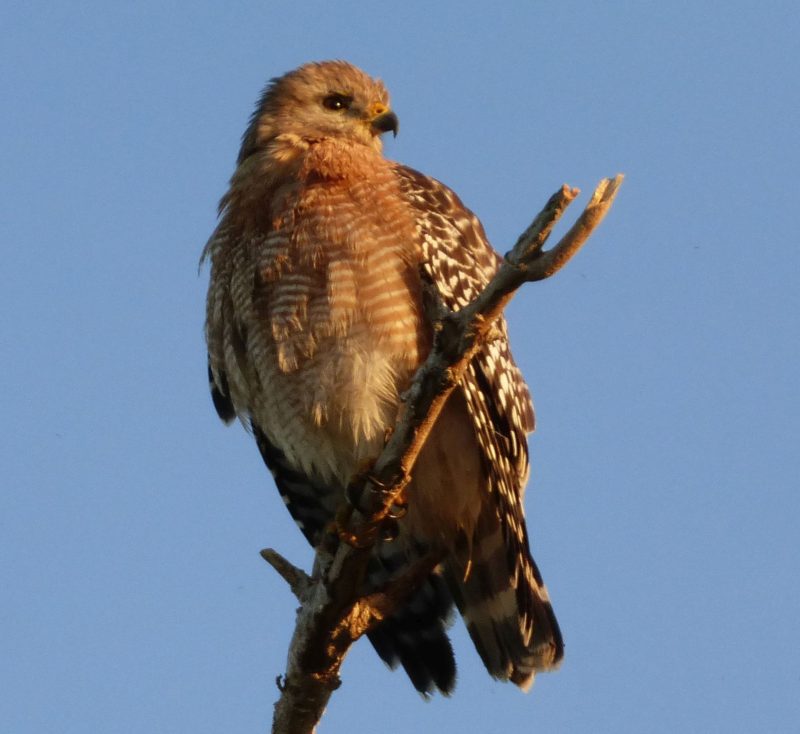Calendar of Events
|
Sunday
|
Monday
|
Tuesday
|
Wednesday
|
Thursday
|
Friday
|
Saturday
|
|---|---|---|---|---|---|---|
|
0 events,
|
0 events,
|
0 events,
|
1 event,
-
Wednesday, February 3, 2021 Like every atlas project, the Marin County Breeding Bird Atlas will feature, at its core, a series of maps that track the distribution of our nesting birds. Join us for a fascinating exploration of high-tech map-making with William Wiskes. William will talk about the pleasures and pains of creating maps for a modern breeding bird atlas. He will focus especially on three classes of maps that he is developing for the Marin County BBA project: conventional paper (printable) maps, an interactive web-map, and a phone-based app that volunteers can use in the field. William Wiskes, GIS Specialist, is the staff cartographer of the new Marin County Breeding Bird Atlas. He is currently a master’s degree candidate at San Francisco State University. An excellent field ornithologist, William has worked on numerous projects in conservation biology, including, among others, field studies of raptors, Pacific Wren, and Black Rail. |
0 events,
|
0 events,
|
0 events,
|
|
0 events,
|
0 events,
|
0 events,
|
0 events,
|
1 event,
-

Speaker: Roger Harris Many of our common Marin County birds, whose abundance we now take for granted, were rare or absent only three-quarters of a century ago. Since the beginning of the Southern Marin Christmas Bird County in the 1970s, for instance, Red-shouldered Hawk detections have increased tenfold. Habitat restoration and maturation, conservation efforts, and cultural changes in the behavior of individual bird species have all contributed to shifting – and, for Marin, generally increasing – bird populations. Snowy Egrets, Great Egrets, and Great Blue Herons, which had been extirpated from the Bay Area, returned in the mid-twentieth century. Black-necked Stilts were first recorded nesting in our marshes in the mid-1960s, followed by American Avocets in 1984. In 1996, Forster’s Terns nested in Corte Madera Shorebird Marsh for the first time in Marin County. The dean of California ornithology, Joseph Grinnell, wrote in 1915 that the Ridgway’s Rail “seems destined to early extinction.” The rail is the logo bird of the Marin Audubon Society and conservation advocacy efforts have made Grinnell’s prediction of a century ago at least premature. Our speaker, Roger Harris, will unpack the evolving dynamics of avifaunal population change using data from Christmas Bird Counts, the Marin County Breeding Bird Atlas, and a variety of other sources. Roger is a Certified Wildlife Biologist and a longtime member of the Marin Audubon Society. Once the pandemic resolves, he hopes to return to leading international eco-tours for the Oceanic Society. Photo courtesy of Roger Harris |
0 events,
|
0 events,
|
|
0 events,
|
0 events,
|
0 events,
|
1 event,
-

Wednesday, February 17, 2021 Mary Ellen Hannibal is an award-winning author. Her book Citizen Scientist: Searching for Heroes and Hope in an Age of Extinction was named a best book of 2016 by the San Francisco Chronicle and won a Nautilus book award. She frequently contributes to Bay Nature, Nautilus, the New York Times, and Science magazines. Her Stanford TEDx talk addresses citizen science in general: Can Citizen Science Save Us? Her most recent TED addresses How you can help save the monarch butterfly, and the planet. Citizen science is an old/new practice of direct observation of nature by amateurs. Today the practice is turbo-charged by smartphone technology and vast computing power. It is needed as never before, because plants and animals are disappearing too fast, and Earth is undergoing a mass extinction. The good news is that citizen science is a concept, a format, and a tool for addressing environmental problems at a local level, including the urban environment. In this talk I'll go over some of the basics of citizen science and focus on local projects that make a difference. |
0 events,
|
0 events,
|
0 events,
|
|
0 events,
|
0 events,
|
0 events,
|
0 events,
|
0 events,
|
0 events,
|
0 events,
|
|
0 events,
|
0 events,
|
0 events,
|
0 events,
|
0 events,
|
0 events,
|
0 events,
|